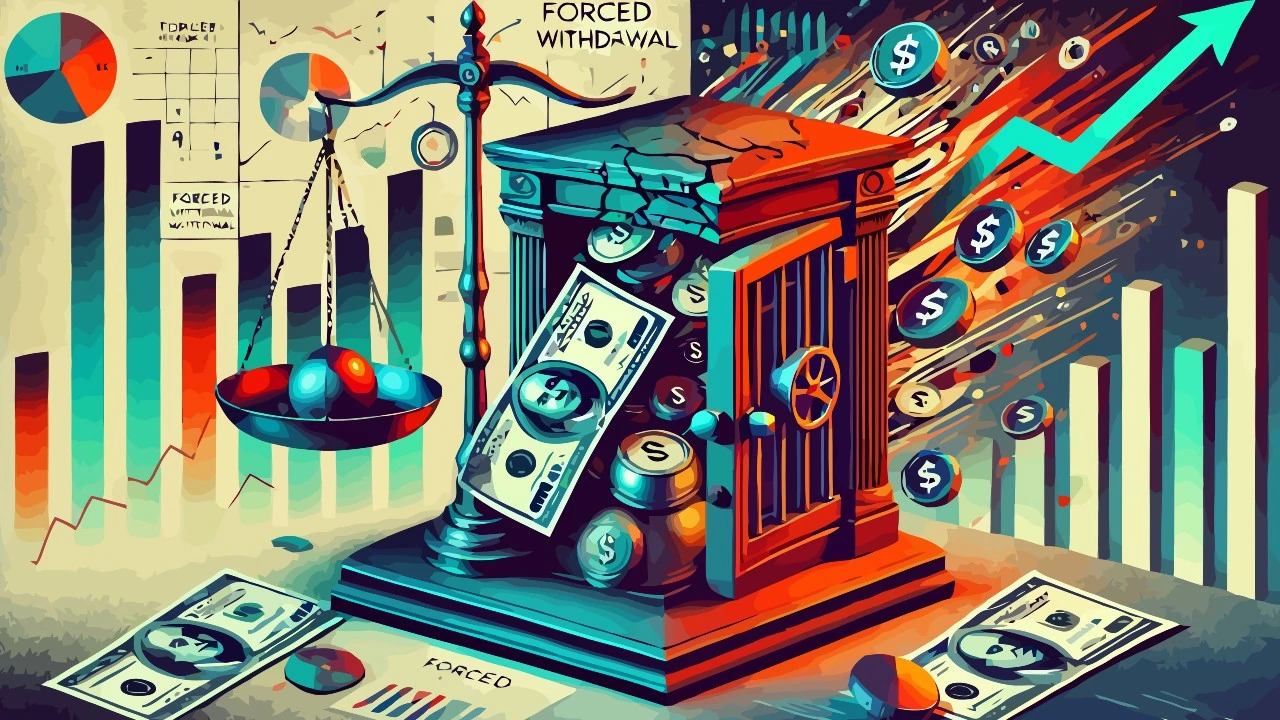The forced withdrawal is an extraordinary measure with which the State, in times of crisis, subtracts a percentage of bank deposits to deal with economic or budgetary emergencies. In Italy, the most famous episode is that of July 9, 1992, when the Amato government applied a 0.6% withdrawal on all bank and postal current accounts to stem the currency crisis and the State deficit.
The fear of forced levy has now returned to the forefront of conspiracy channels in view of the huge defense spending that Europe will have to face. However, this measure is unlikely to be implemented again, as it entails more disadvantages than benefits for those who intend to raise money.
Contents
#1. Lack of homogeneity of the measure
The most obvious conceptual error of forced withdrawal is that it does not consider the real wealth of an individual, but only his immediate liquidity. A billionaire could have almost all of his assets invested in financial securities, real estate or companies, leaving only a small percentage in a current account. On the contrary, a person with few resources could have his entire assets in a modest bank account.
Let’s take a practical example:
- A rich man with 10 million euros, but only 1% liquidity, suffers an insignificant withdrawal of 600 euros.
- A poor person with 10,000 euros in his current account pays the same percentage, suffering an economic impact of 60 euros.
In short… 540 euros of difference for a wealth that differs by a whopping 9,990,000 euros! I wanted to highlight this difference because historically the rich are instructed to maintain invested capital, while the poorest tend to have a much larger liquidity reserve due to a lower financial culture.
This distortion means that the less well-off are disproportionately affected, while large fortunes can almost completely avoid the effect of the measure. If the purpose of the levy was to raise funds fairly, this measure has proven to be profoundly unfair, since it has penalized most significantly precisely those with fewer resources. Furthermore, by not taking into account the real overall wealth of an individual, a paradoxical situation has been created in which some individuals with enormous financial resources, but without immediate liquidity, have not been affected at all by the levy, while workers with modest savings have been hit hard.
#2. The exclusion of securities
Another problem is that the forced withdrawal only affected current and postal accounts, leaving investments in stocks, bonds and other financial instruments unharmed. This created an obvious injustice: those who had transformed their liquidity into securities did not suffer any withholding, while those who out of necessity or prudence kept their money in the bank were penalized.
In practice, the State rewarded the most experienced and wealthy, who had diversified their assets, and hit those who did not have financial knowledge or safe investment alternatives. Those who had the means to invest their capital in more sophisticated financial instruments were able to protect themselves from the measure, while those who used current accounts as their only form of savings were punished. Furthermore, this exclusion generated a negative signal for the population: those who saved in liquid form saw their money taken away, while those who were able to avoid the measure were rewarded. The final result was a loss of confidence in the system, with the risk that many citizens would decide to move their resources outside the banking circuit to avoid future withdrawals.
#3. Those with cash are not touched
In Italy, the 1992 levy ignored another key variable: cash. Any money outside the banking system (kept at home or in safety deposit boxes) was left untouched. This meant that those who had anticipated the risk and withdrawn their money before the decree found themselves in an advantageous position compared to those who, trusting the system, left their money deposited in the bank.
The final effect was once again an unequal treatment, which randomly and arbitrarily affected different groups of citizens. The possibility of escaping the withdrawal simply by holding cash made the system even less fair and encouraged a rush to withdraw money. The real risk, in such cases, is to generate a domino effect in which more and more people prefer to hold cash reserves rather than rely on banks. A phenomenon of this type leads to the dysfunction of the financial system and undermines confidence in the monetary stability of the country. This is why, among other reasons, withdrawing large sums of cash is a procedure that is slowed down, even if it should not be prevented.
4. Withdrawal is less popular than taxes
From a psychological and political point of view, forced levy is one of the most unpopular measures a government can implement. Although tax increases have similar effects over time, they are perceived very differently:
- A tax increase of, say, 6% (equivalent to a 0.6% levy over a long time horizon) generates less resistance, because it is spread out over time and often attributed to indirect causes such as inflation or government spending.
- An immediate forced withdrawal, on the other hand, appears as a direct intrusion into savings, triggering panic reactions and distrust in the banking system.
In 1992, this measure caused capital flight and a loss of confidence in the country’s financial stability. The government had to officially deny the possibility of new withdrawals to avoid a collapse of confidence in the banking system. When citizens perceive that their money can be withdrawn arbitrarily, their sense of security crumbles, leading to defensive behaviors that can have even more negative effects on the economy as a whole.











Leave a Reply